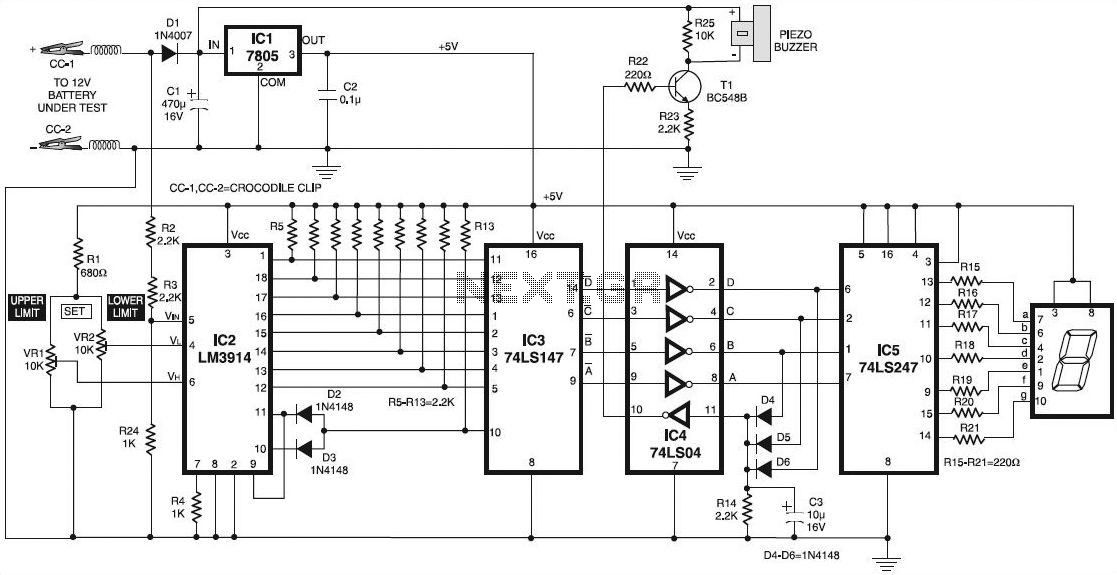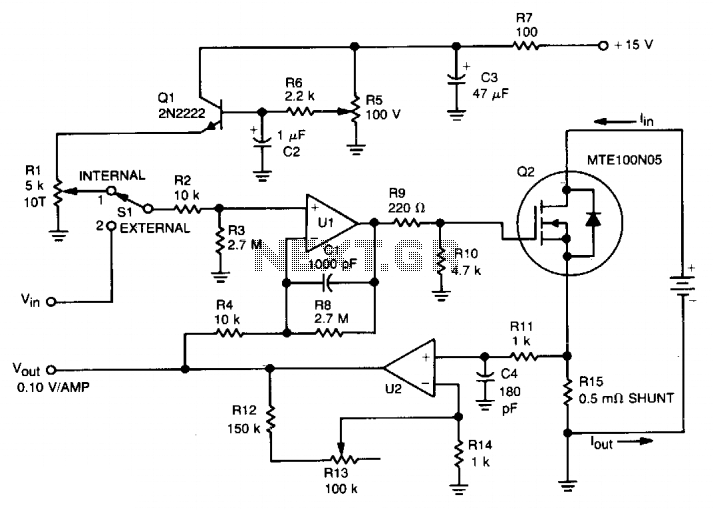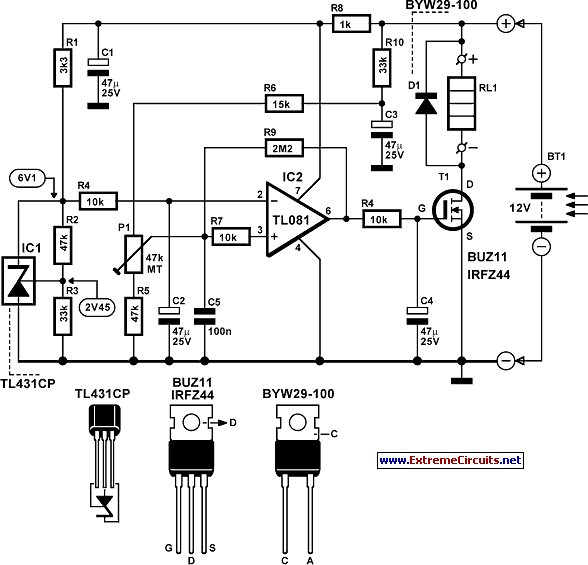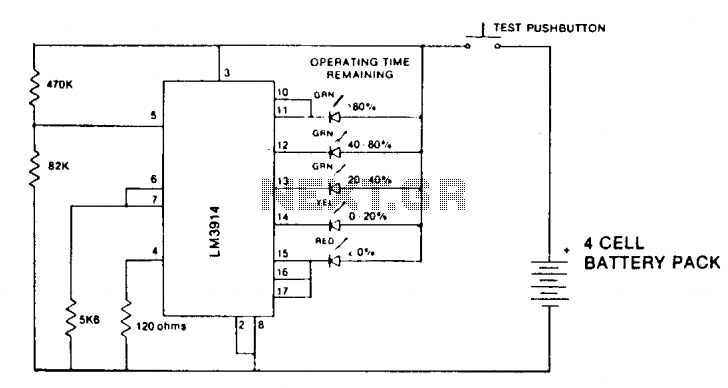
Battery Charger

This high-performance charger efficiently charges gelled lead-acid batteries and automatically shuts off upon reaching a full charge. Initially, the charging current is maintained at 2 A; however, as the battery voltage increases, the current gradually decreases. Once the current drops to 150 mA, the charger transitions to a lower float voltage to prevent overcharging. When the battery reaches full charge, transistor Q1 activates an LED to indicate this status.
This high-performance charger is designed specifically for gelled lead-acid batteries, which are commonly used in applications requiring reliable energy storage and maintenance-free operation. The charging process begins with a constant current of 2 A, ensuring a rapid initial charge that effectively brings the battery voltage up to the desired level.
As the battery charges, the internal resistance of the battery increases, leading to a rise in voltage. The charger is equipped with a feedback mechanism that continuously monitors the battery voltage and adjusts the charging current accordingly. This dynamic adjustment is crucial for optimizing the charging process and prolonging the life of the battery.
When the charging current decreases to 150 mA, the charger switches to a float charging mode. This mode reduces the voltage applied to the battery, effectively maintaining the charge without risking overcharging, which can damage the battery and reduce its lifespan. The float voltage is carefully set to ensure that the battery remains fully charged while minimizing the risk of gassing and electrolyte loss.
The status of the charging process is visually indicated by an LED, which is controlled by transistor Q1. When the battery reaches full charge, Q1 is activated, illuminating the LED to signal that the charging process is complete. This feature provides a clear and immediate indication of the battery's status, allowing users to monitor the charging process easily.
In summary, this charger combines efficient charging, intelligent current management, and user-friendly indicators to ensure optimal performance and battery care. Its design reflects a commitment to reliability and effectiveness in maintaining gelled lead-acid batteries. This high-performance charger quickly charges gelled lead-acid batteries, and turns off at full charge. At first, the charg e current is held at 2 A, but as battery voltage rises, current decreases. When current falls to 150 mA, the charger automatically switches to a lower float voltage to keep from overcharging. When you hit full charge, transistor Ql lights the LED to indicate that status.
This high-performance charger is designed specifically for gelled lead-acid batteries, which are commonly used in applications requiring reliable energy storage and maintenance-free operation. The charging process begins with a constant current of 2 A, ensuring a rapid initial charge that effectively brings the battery voltage up to the desired level.
As the battery charges, the internal resistance of the battery increases, leading to a rise in voltage. The charger is equipped with a feedback mechanism that continuously monitors the battery voltage and adjusts the charging current accordingly. This dynamic adjustment is crucial for optimizing the charging process and prolonging the life of the battery.
When the charging current decreases to 150 mA, the charger switches to a float charging mode. This mode reduces the voltage applied to the battery, effectively maintaining the charge without risking overcharging, which can damage the battery and reduce its lifespan. The float voltage is carefully set to ensure that the battery remains fully charged while minimizing the risk of gassing and electrolyte loss.
The status of the charging process is visually indicated by an LED, which is controlled by transistor Q1. When the battery reaches full charge, Q1 is activated, illuminating the LED to signal that the charging process is complete. This feature provides a clear and immediate indication of the battery's status, allowing users to monitor the charging process easily.
In summary, this charger combines efficient charging, intelligent current management, and user-friendly indicators to ensure optimal performance and battery care. Its design reflects a commitment to reliability and effectiveness in maintaining gelled lead-acid batteries. This high-performance charger quickly charges gelled lead-acid batteries, and turns off at full charge. At first, the charg e current is held at 2 A, but as battery voltage rises, current decreases. When current falls to 150 mA, the charger automatically switches to a lower float voltage to keep from overcharging. When you hit full charge, transistor Ql lights the LED to indicate that status.





